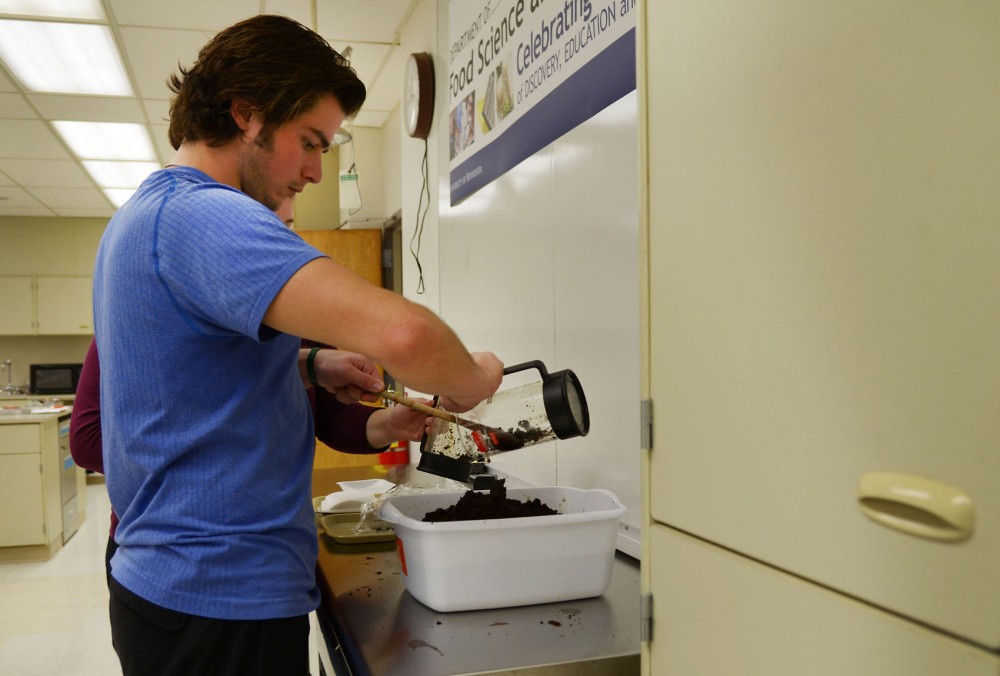Students flooded into the pristine white lab. The unadorned stove tops and cabinets looked more like an Ikea showroom than a classroom.
To many, Science of Food and Cooking, frankly, seems like a blow-off course. It fulfills a physical science requirement, the tests are simple, there isn’t much reading and on this day, students were making coffee.
Despite this, lab instructor William Lendway believes students will retain more from the course than any alternative science classes.
“This building was originally used for home economics,” Food Science lab coordinator Kendra Kauppi said. Home economics may seem like an antiquated concept, but Science of Food and Cooking freely accepts its similarities to the bygone program.
Though Lendway concedes the class is easy, he sees it as more relevant than other science courses.
“This class is practical, people can apply this to their lives,” Lendway said, before grilling a student on the differences in astringency between two cups of coffee. “Astronomy is interesting, but it just doesn’t apply to people’s lives like this class.”
A degree in food science is geared more toward dedicated scientists than budding chefs. Food science and nutrition senior Alyssa Pagel, who works as a TA in the food lab, said alumni often go into more corporate food ventures, like research and development and quality control.
Lendway, a 25-year culinary veteran who cut his teeth in kitchens rather than classrooms, sticks out in the department. In such a science-oriented program, a dyed-in-the-wool chef offers a unique perspective.
The science, in his mind, works towards entirely practical ends. Rather than constructing the kind of bizarre molecular gastronomic creations associated with scientific cooking, Lendway emphasizes perfecting standard recipes. Focusing on the specific processes at work helps dispel the old wives’ tales surrounding cooking. He sees himself as a sort of Mythbuster for food.
“There’s a lot of interest in food and in the science behind it,” Lendway said. He’s optimistic about what students will take away from the class.
Despite all this, Lendway stresses that the course isn’t a cooking class. Even with all the practical knowledge, the subject matter is approached in a scientific context.
Though Lendway’s tone is generally lighthearted and conversational, he gets serious when asking a student how coarser-ground coffee affects the taste. He expects a specific, scientific answer. When baking muffins a few weeks prior in the class, they methodically tested the effects of various leaveners.
The class is casual and Lendway likes it that way. During the lab, students chat and make jokes. They sip on their coffee samples and slowly get through their work. Without the rigor of a traditional college classroom, Lendway said he likes to believe that what they learn here will stick with them longer than material from any other course.








